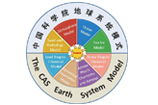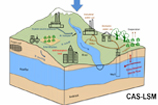
News and Progress
-
In the AI era, pure data-driven meteorologicalclimate models are gradually catching up with,even surpassing, traditional numerical models. However, significant challenges persist in current deep learning models, such as low physical consistencysuboptimal forecasting of divergent winds. These limitations hinder the predictive capabilities for complex weatherclimate phenomena, including precipitation. A promising approach to address these challenges involves combining physics, atmospheric dynamics,deep learning models......

-
The First "Earth System Numerical Simulation Science Conference"the Inaugural Meeting of the "EarthLab ScienceTechnology CommitteeUser Committee" were successfully held in Beijings Miyun from November 17th to 18th, 2023......

-
The Chinese Academy of Sciences Earth System Model (CAS-ESM2.0), a sophisticated Earth modeling tool, has achieved a major breakthrough in fully coupled atmospheric CO2 simulation, as revealed in the latest report published in Advances in Atmospheric Sciences. Their findings highlight CAS-ESM2.0s exceptional capability in bi-directional coupling of terrestrialmarine carbon cycles, along with atmospheric CO2, enabling accurate spatiotemporal assessments of atmospheric CO2 changes......

-
Numerical modeling is an important way to study evolution mechanism of whole earth spheresits prediction of future climate status provides science advice to policy makers. Along with improved understanding of the earth, the physicalchemical processes in the model are well represented. Still, the traditional climate system model has been unable to meet societal needs.

-
Human activities, such as urban planning, irrigationagricultural fertilization, affect terrestrial carbon, nitrogenwater cycle processesaquatic ecosystems. Some human activities lead to water stress-- the lack of fresh water resources to meet the standard water demand--ecological environment damage, including groundwater lateral flow,the movement of frostthaw fronts. These changes in turn alter energy balancewater budget,affect weather, climateenvironment.





